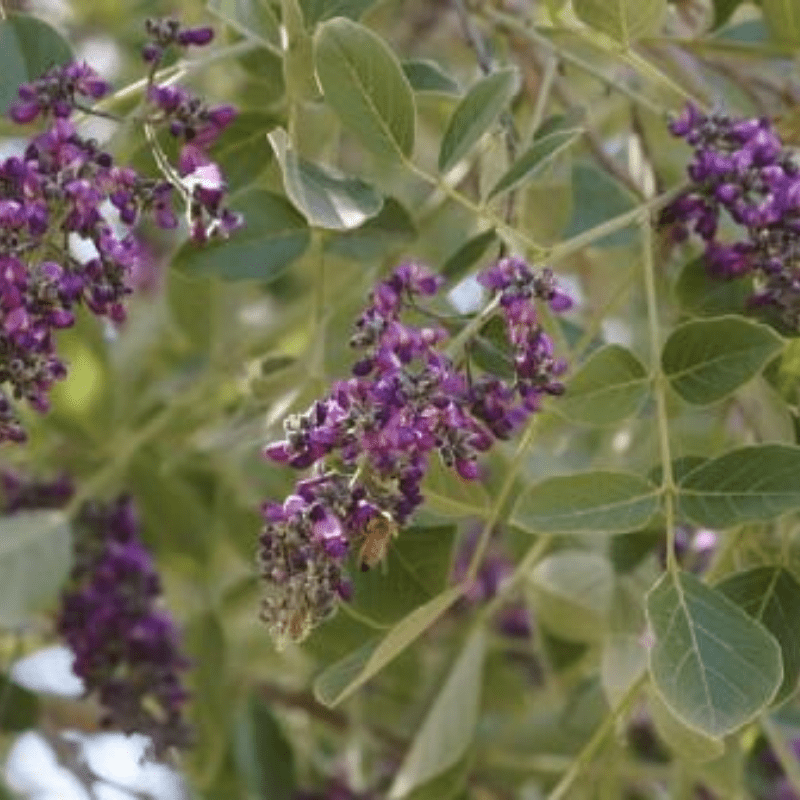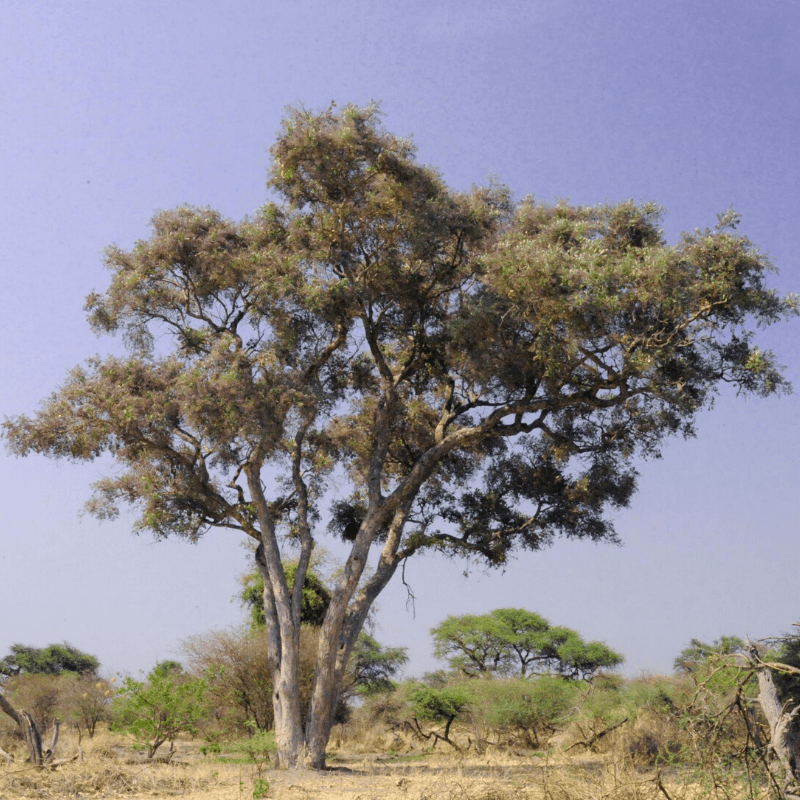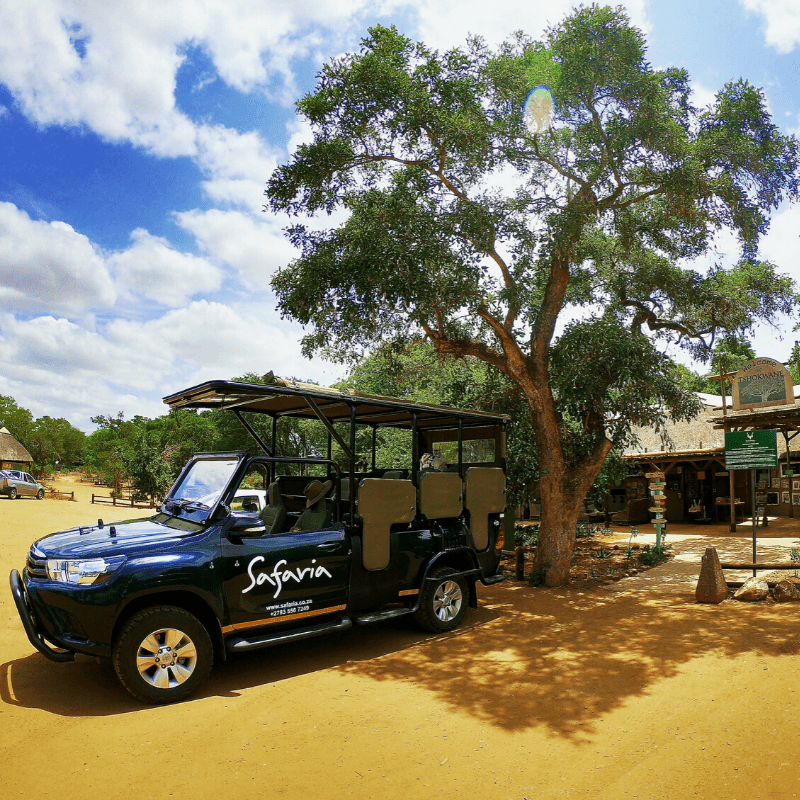Apple-Leaf Tree
(Philenoptera violacea)
Family: Fabaceae
Common names: apple-leaf (Eng.); appelblaar (Afr.); umBhandu, umPhanda, isiHomohomo (isiZulu)
SA Tree No: 238
Description
The Apple Leaf (Philenoptera violacea) is a medium to large-sized tree that is deciduous to semi-deciduous depending on the region and climate. This striking tree grows up to 18 m in height with a wide-spreading canopy of large green leaves splaying into a crown. The main trunk is tall, straight and bare with beautiful bends and twists that can take on a very artistic look. The bark of the Apple Leaf is a lighter grey with flaking on the lower trunk and older branches. The Apple leaf exudes a sticky blood red sap when cut or gauged at particularly by Buffalo and Elephant. Its common to see this as well as the mud smears left by certain animals as these trees can often be found near or not far from drainage lines, pans and rivers. The leaves of teh Apple Leaf are large (60-200 mm long), they are unevenly compound leaves with 1-3 pairs of opposite leaflets and one terminal leaflet. The leaves are hard and rough in texture with a beautiful glossy green colour on top and rather lime green to grey-green underneath on the downward facing side. The mature terminal leaves are much larger and more impressive than the lower leaves. The flowers of the Apple Leaf are wildly scattered across the tree in bunches and varying in colour from a very light pink to bluish-pink, mauve or deep violet. They are schweet smelling and create a hive or activity and are sweet-scented. These trees tend to flower in the Kruger from late September through to early January and this can be just before or after the new burst of fresh green leaves. The f of the Apple leaf is a rather flattened pod which doesn't split entirely, it is about 120 x 25 mm in size, rather hairless and continues on the tree ends during Krugers winter months between May and August.
Where does the name come from and what are the historical aspects
The name Philenoptera is derived from the Greek words philenos (tractable or manageable) and pteros (wing) which conveys the meaning that the wing makes the pod manageable for dispersal. Violacea is derived from the Latin word violaceus (violet) which refers to the violet (blue-purple) flowers that the Apple-leaf tree bares.
The species name Lonchocarpus Capassa - "capassa is the Mozambique vernacular and means "of no value".
Locally in the Kruger National Park this is also referred to as the Rain Tree . This tree may be infected with aphids (Froghopper - Ptyelus grossus) which excrete a sweet foam that drips down to form a wet patch on the ground, hence the name.
Ecology
Philenoptera violacea is a fairly drought-resistant species but it is sensitive to frost. In the Kruger National Park the tree grows singularly or in pairs. Groups of smaller trees are often encountered particularly along the road side between Satara and Olifants Camps. This species can also be found along perennial river courses as well as waterlogged soils east of Lower Sabie. It will grow in almost all soil types and forms a a distinct shape.
The leaves are NOT very palatable but in the absence of other browse it will be eaten by Giraffe, Kudu, Eland, Elephant and Impala. Elephants seem to favour the bark and areas with a dense cluster of trees can often look as if a hurricane passed through as a result of extensive Elephant feeding. It is also suggested that due to presence of a toxin called Rotanin in the leaves, antelope species such as Impala and Kudu will rub their horns over the smaller stunted trees extensive and then apply the mulch of resin across their hind flanks as a anti-parasite treatment.
Uses
The Apple Leaf has limited economic value but is used to make household items such as such as pestles for pounding grain, pots and axe handles as well as fence posts and roofing poles. and tool handles. In local South African tradition it is however believed that should you cut down a Apple Leaf it will bring a drought season on your crops and also a quarrel in your family.
In South Africa and the Kruger National Park the tree is used in traditional remedies. Most parts of the plant are used to treat diarrhoea. The roots are used for gastro-intestinal problems; powdered root-bark is used to treat colds and snakebite. Root infusions are commonly used as part of a hookworm remedy.








